- Home
- Machining techniques
- CNC Machining Services
- Cooperative supply services
- Designs
- Materials
- Finishing Services
- Shop
- Products
- Guide
- About Us
- Contact Us
2023.5.25
Geometric Dimensioning and Tolerancing (GD&T) is a symbolic language used in engineering and manufacturing industries to communicate design intent and specify tolerances for geometric features. GD&T provides a standardized system that enables precise and unambiguous communication between designers, engineers, and manufacturers. Central to GD&T are tolerance definitions, which define the permissible variation for specific geometric characteristics. There are various tolerance definitions available in GD&T, we show them in this article.
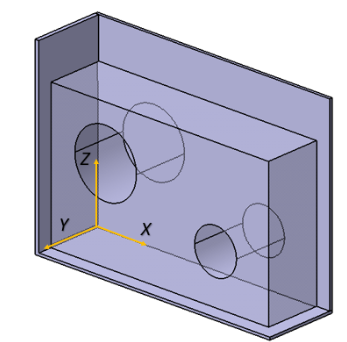
Angularity Definition:
Angularity is a tolerance definition that specifies the permissible variation in the orientation of a line, surface, or feature in relation to a datum reference. It ensures that the angle between the feature and the datum reference remains within a specified tolerance zone. Angularity tolerance is commonly used to control the alignment and orientation of features, such as holes or surfaces, to ensure proper fit and functionality.
Perpendicularity Definition:
Perpendicularity is a tolerance definition that regulates the allowable deviation from a true 90-degree angle between two surfaces or features. It ensures that the surfaces or features remain perpendicular within a specified tolerance zone. Perpendicularity tolerance is crucial for applications where accurate right angles are essential, such as mating surfaces or orthogonal features.
Cylindricity Definition:
Cylindricity is a tolerance definition that governs the roundness and straightness of a cylindrical feature, such as a shaft or hole. It specifies the permissible deviation of the feature’s axis from a true cylinder within a specified tolerance zone. Cylindricity tolerance ensures that the cylindrical feature maintains its form, minimizing any wobbling, eccentricity, or misalignment.
Runout Definition:
Runout is a tolerance definition that determines the allowable variation of a feature’s form or profile as it rotates about an axis. It measures the amount of eccentricity or wobble that a feature exhibits during rotation. Runout tolerance is commonly used for cylindrical or circular features, such as shafts or flanges, to ensure smooth rotation, minimize vibration, and maintain proper alignment.
Total Runout Definition:
Total runout is a tolerance definition that encompasses both the circular and axial variations of a feature. It combines the radial runout (circular) and axial runout (linear) components to define the overall variation of the feature. Total runout tolerance ensures that a feature maintains its form, both in terms of its circular shape and its axial alignment, during rotation.
Profile of a Line Definition:
Profile of a line is a tolerance definition that controls the allowable deviation of a line or curve from its true ideal form. It specifies the tolerance zone within which the actual profile must lie. Profile of a line tolerance is commonly used to ensure the smooth flow, contour, or alignment of features, such as cam profiles or gasket sealing surfaces.
Parallelism Definition:
Parallelism is a tolerance definition that governs the permissible deviation of two surfaces or features from being perfectly parallel to each other. It ensures that the surfaces or features remain parallel within a specified tolerance zone. Parallelism tolerance is crucial for maintaining consistent spacing, alignment, and fit between mating parts or surfaces.
Position Definition:
Position is a tolerance definition that combines both location and size requirements for a feature relative to a datum reference. It specifies the allowable deviation of the feature’s center or axis from the desired position within a specified tolerance zone. Position tolerance is commonly used to control the location of holes, slots, or other features that require precise positioning and alignment.
Straightness Definition:
Straightness is a tolerance definition that defines the allowable deviation of a line, surface, or feature from a true straight form. It ensures that the feature remains within a specified tolerance zone, minimizing any bends, curves, or warping. Straightness tolerance is critical for features such as linear guides, shafts, or alignment surfaces where straightness is essential for proper function.
Concentricity Definition:
Concentricity is a tolerance definition that controls the permissible variation in the location of two or more features, such as circles, spheres, or cylinders, sharing a common axis. It ensures that the features remain concentric within a specified tolerance zone. Concentricity tolerance is important for applications where precise alignment and coaxiality are critical, such as bearings, rotating components, or mating parts.
Flatness Definition:
Flatness is a tolerance definition that specifies the acceptable variation from a true flat surface for a feature, such as a plane or surface. It determines the maximum allowable deviation of the feature from a perfect plane within a specified tolerance zone. Flatness tolerance is crucial for applications where flat surfaces are required to ensure proper contact, sealing, or stability.
Symmetry Definition:
Symmetry is a tolerance definition that governs the permissible variation of a feature’s form or profile about a specified axis, centerline, or plane. It ensures that the feature maintains a balanced distribution of material or shape relative to the datum. Symmetry tolerance is commonly used for rotational or mirror-symmetric features, promoting aesthetic appeal, balanced weight distribution, or efficient manufacturing processes.
Circularity Definition:
Circularity is a tolerance definition that controls the roundness of a feature, such as a circular hole, cylindrical surface, or profile. It specifies the acceptable deviation of the feature’s form from a true circle within a specified tolerance zone. Circularity tolerance ensures that the circular feature maintains its shape, minimizing any out-of-roundness or eccentricity.
Profile of a Surface Definition:
Profile of a surface is a tolerance definition that controls the allowable deviation of a surface from its true ideal form. It specifies the tolerance zone within which the actual surface must lie. Profile of a surface tolerance is used to ensure the proper form, contour, or alignment of surfaces, such as mating flanges, sealing surfaces, or critical contact areas.
 GD&T Runout Tolerance Types: Total Runout vs Circular Runout
GD&T Runout Tolerance Types: Total Runout vs Circular Runout
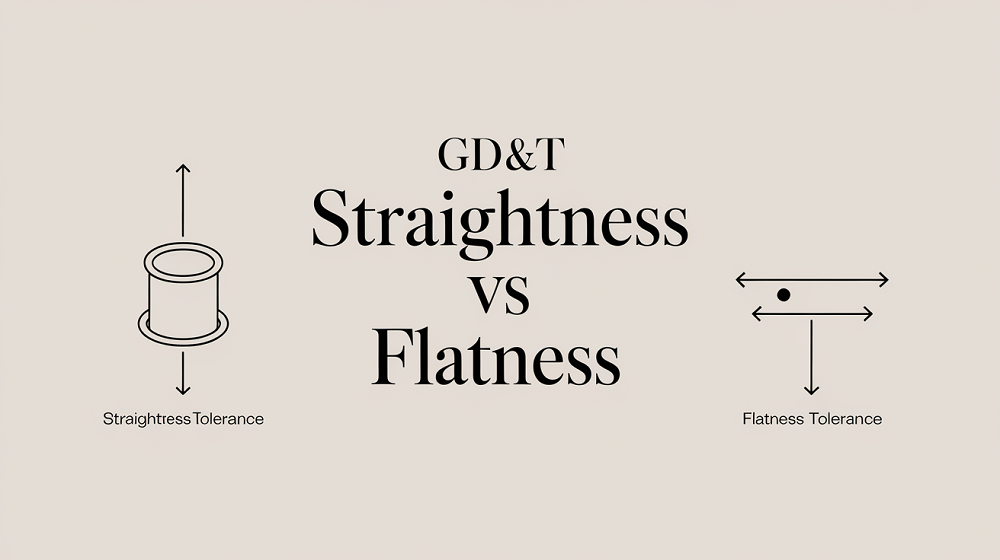 Straightness vs Flatness – Difference Between Flatness and Straightness
Straightness vs Flatness – Difference Between Flatness and Straightness
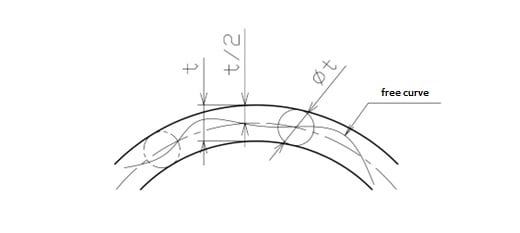 GD&T Profile Tolerance: Basic Knowledge, Types, Symbol, Calculation, Uses
GD&T Profile Tolerance: Basic Knowledge, Types, Symbol, Calculation, Uses
 What Is Engineering Tolerance – Types of Tolerances in Engineering Drawing
What Is Engineering Tolerance – Types of Tolerances in Engineering Drawing
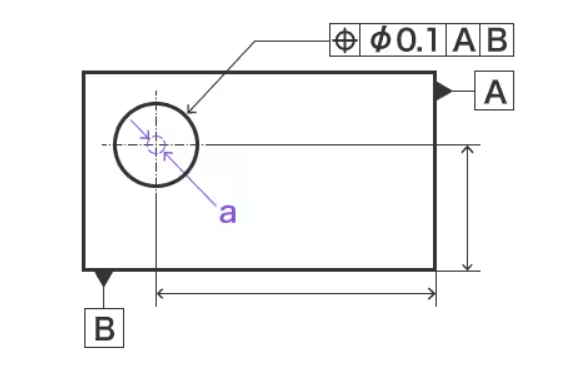 GD&T Position and True Position Definitions, Calculations & Differences Between Them
GD&T Position and True Position Definitions, Calculations & Differences Between Them
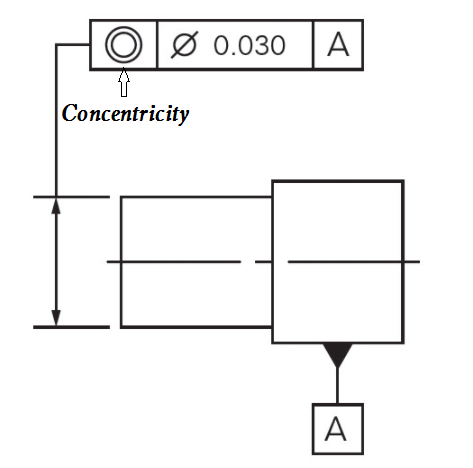 What is Concentricity in GD&T – How to Measure, Calculate Concentricity & Concentricity vs Runout
What is Concentricity in GD&T – How to Measure, Calculate Concentricity & Concentricity vs Runout
